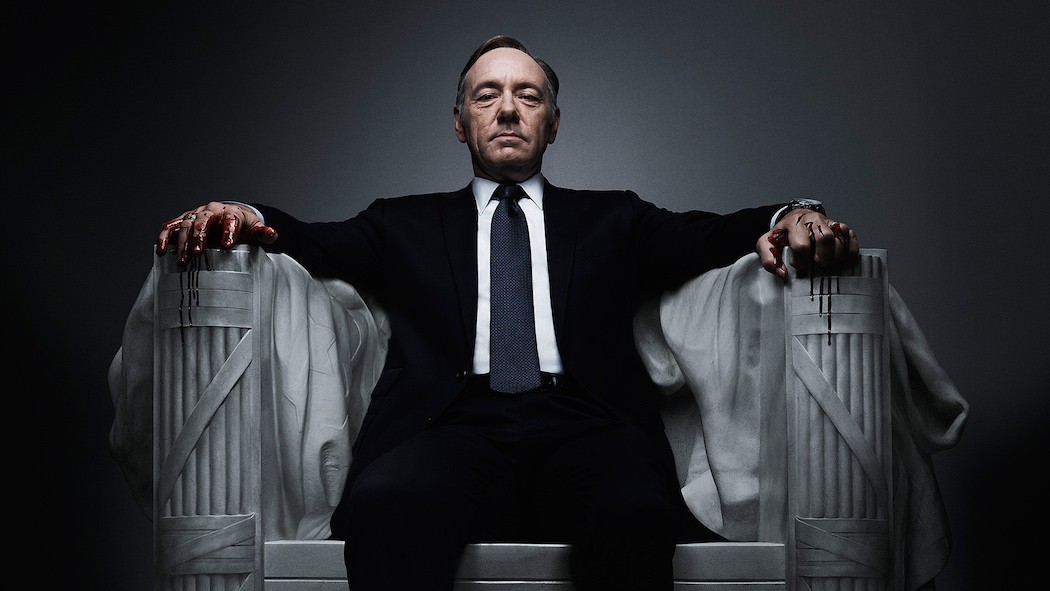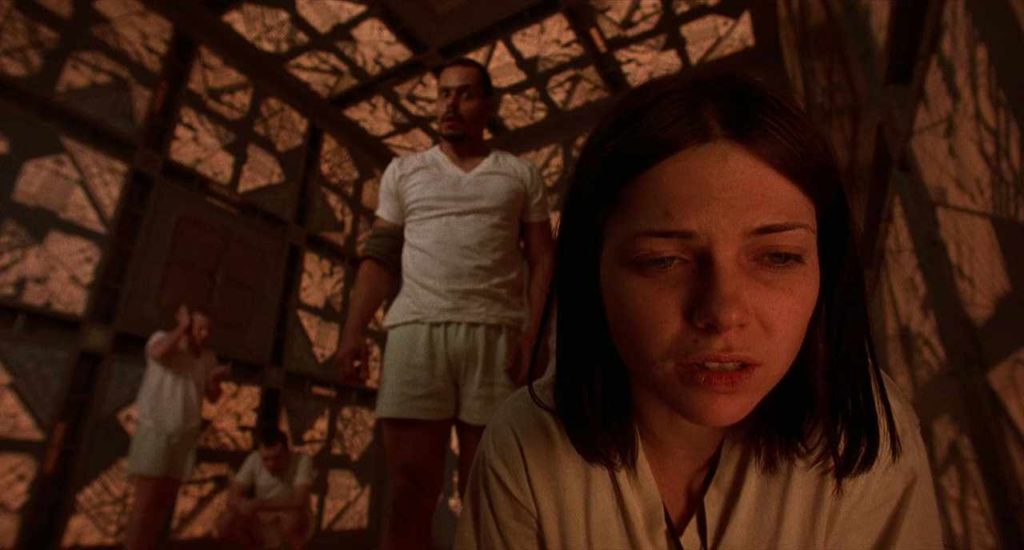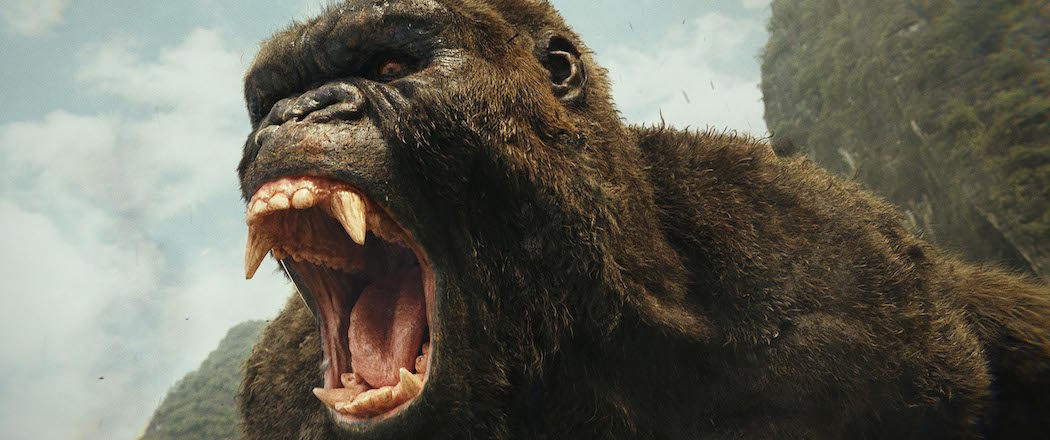
In 'Kong: Skull Island,' visual effects take center stage, providing the perfect moment to look back at King Kong effects since the original 1933 film.
For nearly 85 years, Kong has been a famous movie monster, battling dinosaurs, biplanes, Godzilla, and man. This God-like ape is a formidable force with a sensitive side, a penchant for blondes, and tall buildings. Kong has been created using a variety of special and visual effects techniques to get movie audiences to suspend their disbelief to embrace his otherworldly dimensions. From the original King Kong to the latest—Kong: Skull Island—effects are the backbone of their success. Here’s a look at the most inventive Kong movies, and how they brought him to life.
A Legend Is Born
When audiences first saw the tall, dark, and hairy monster inhabiting a tropical island in King Kong (Dirs. Merian C. Cooper and Ernest B. Schoedsack,1933), they were amazed. The film made more than $100,000 in its first week, making it the biggest movie opening ever at the time. Kong become a star, thanks to the creative genius of the film’s special effects team.
For years after its release, a rumor circulated that a man in a monkey suit played Kong—and some stuntmen even said they were that man. The larger-than-life ape was actually animated models. The 18- to 24-inch models that were covered in rabbit fur, built by Willis O’Brien’s assistant Marcel Delgado, made history as the first to have metal skeletons and joints, allowing smoother movements with rubber muscles that expanded and contracted. It shows; Kong moves with fluidity throughout the film by way of O’Brien’s stop-motion animation. And King Kong is credited as one of the first to use miniature rear projections for special effects sequences.
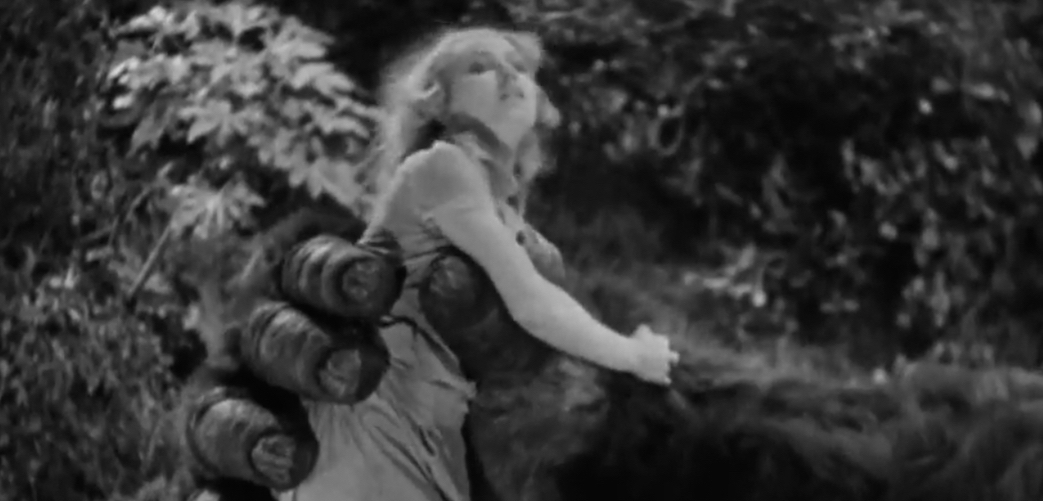
A giant hand was also constructed with fingers that closed around lead actress Fay Wray, and then was raised 10 feet into the air with a crane. And you can’t ignore the 20-foot high head that had three men inside operating levers to change Kong’s facial expressions.
The special effects in King Kong may seem rudimentary today, but they were an important milestone in moviemaking and understandably captivated audiences.
Rick Baker in a Monkey Suit
In 1976, famed make-up effects artist Rick Baker donned a monkey suit to play the iconic monster in King Kong (Dir. John Guillermin). Baker collaborated with effects designer Carlo Rambaldi to create Kong’s suit, full-scale mechanical hands were made, as well as a 40-foot tall Kong robot. The robot was meant to be the centerpiece of the film but it was barely used because of technical issues, so Baker’s monkey suit filled in. The movie itself was a hit, but the memory that lasts from it is the monkey suit, and how it reverberates when Kong hits his chest because real flesh and muscle don’t react that way. It’s also funny to see Kong’s muzzle bounce-back into place each time Dwan (Jessica Lange) hits him.
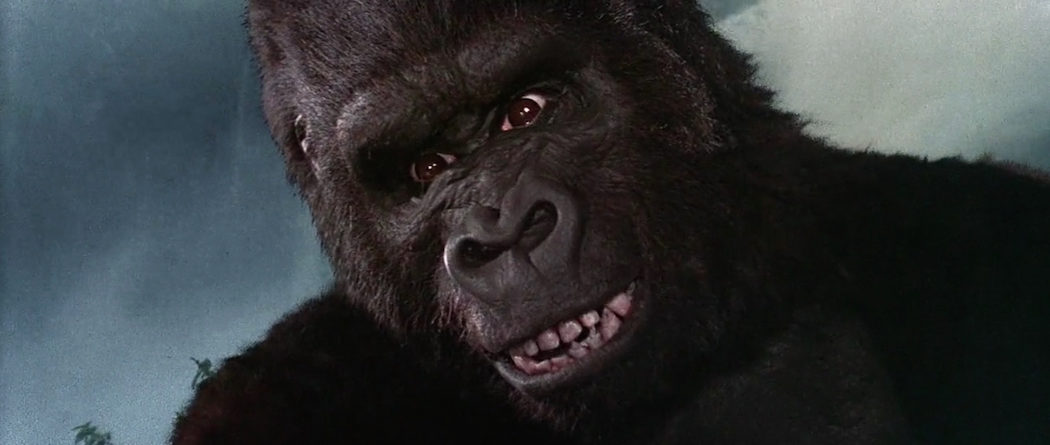
The film could have used animated models like the original, but that wouldn’t have been as memorable. Instead, Baker made history with the super-shiny monkey suit and its moss-like fur; in all fairness, it could have looked a lot worse.
Peter Jackson’s King Kong
When Director Peter Jackson decided to remake the original King Kong, visual effects took center stage. Released in 2005, the $207 million budget picture broke the record for the largest number of effects shots in a single film. It won the Oscar for Best Visual Effects, but there are mixed feelings about the effects in the film, and with good reason. The 25-foot Kong was created with motion capture and digital animation, realizing a 3D model. Andy Serkis, wearing a blue bodysuit with optical markers, provided the motion capture performance.
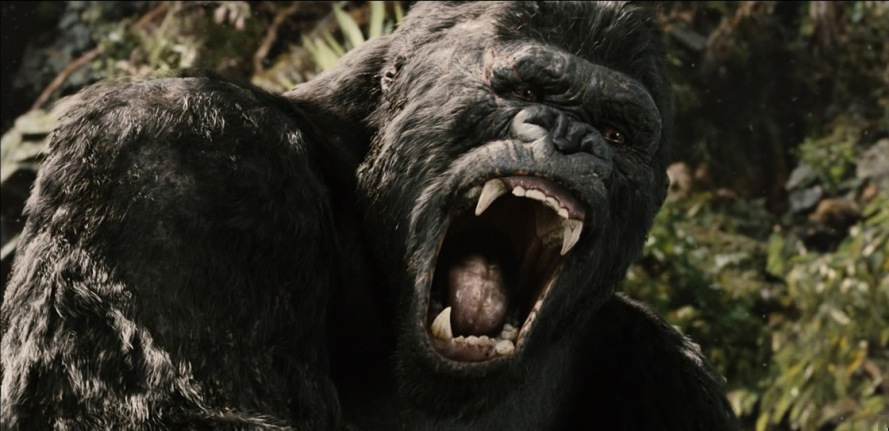
The end result: an impressive Kong, when he’s not in-motion. The compositing of the computer generated imagery (CGI) and live action is clunky. You can tell quite often that layering has taken place, and the smooth combination that is expected from such a grandiose effects film is not attained. Jackson went big with King Kong, and while Kong may be grand in scope and pleasing to the eye, the real success in the film goes to Serkis’ performance. Without him giving Kong lifelike emotions and movement, King Kong would merely find its place in film history as an example of how not to mix live action and CGI.
Kong: Skull Island
Kong will always be renowned for his strength and enormity. In Kong: Skull Island (Dir. Jordan Vogt Roberts, 2017), he’s been taken to a whole new level—literally—at 100-feet tall! “That’s important because that dimension gives Kong weight and a grandiose quality, where a human will look like a speck in the shadow of this colossus, and you see how insignificant we are in his world, where we really don’t belong,” Visual Effects Supervisor Jeff White explained in materials for the film. A team of almost 300 artists, animators, and technicians from Industrial Light & Magic worked on Kong: Skull Island for over a year and a half. The time paid off: Kong is absolutely stunning to behold, and undeniably the greatest execution to date.
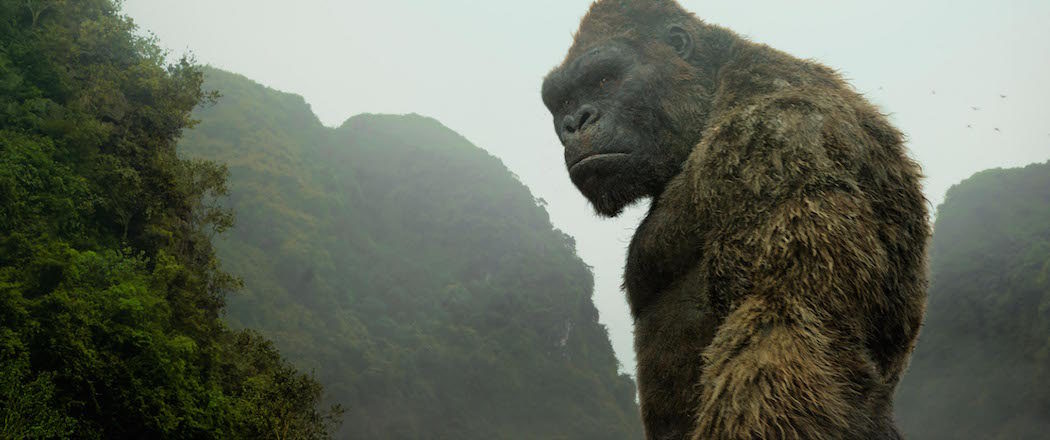
Influenced by the 1933 film, creature designer Carlos Huante reviewed posed frames from it and then drew muscle and body shape details to create an anatomically updated physique for Kong. Then ILM exaggerated the proportions of his muzzle, gave him a small crown and huge brow, and made his coloring a richer, orange-brown. To bring out the depths of those features, strong side lighting was used. And this was all done with traditional keyframe animation, not performance capture by an actor, although a facial capture session with Toby Kebbell and a motion capture session with Terry Notary were completed.
The team at ILM were wildly successful with Kong: Skull Island, and it’s hard to find a flaw in the visual effects of the film. To nitpick, Kong’s hair (consisting of 19 million strands that took a year to hand-groom, shape, and sculpt) does resemble a stuffed animals at times, but when you see it covered in water, droplets glistening and being shaken off, you’re sold on his absolute lifelikeness.
It’s the small details though, like when the palm of Kong’s hand is in close-up, with its wrinkles, rough fleshy patches, and creases that are exactly like a real ape, that make it so you have no choice but to salute the visual effects team. Kong is magnificent, and when he’s in action, fighting man, choppers, or beasts, the rendering of his movements appear flawless. And his eyes! They create stunning emotional responses.
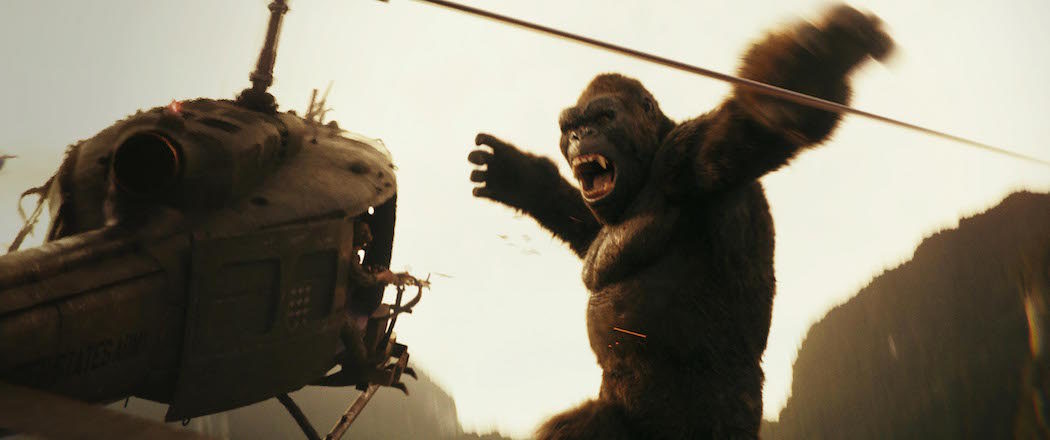
Every Kong film has pushed the boundaries of effects technology, some with more success than others, and it’s exciting to see that the latest Kong is the closest we’ll ever get to the fantastical becoming real—unless of course, Skull Island really does exist and an expedition is leaving soon.
*This article originally appeared at Crixeo.
